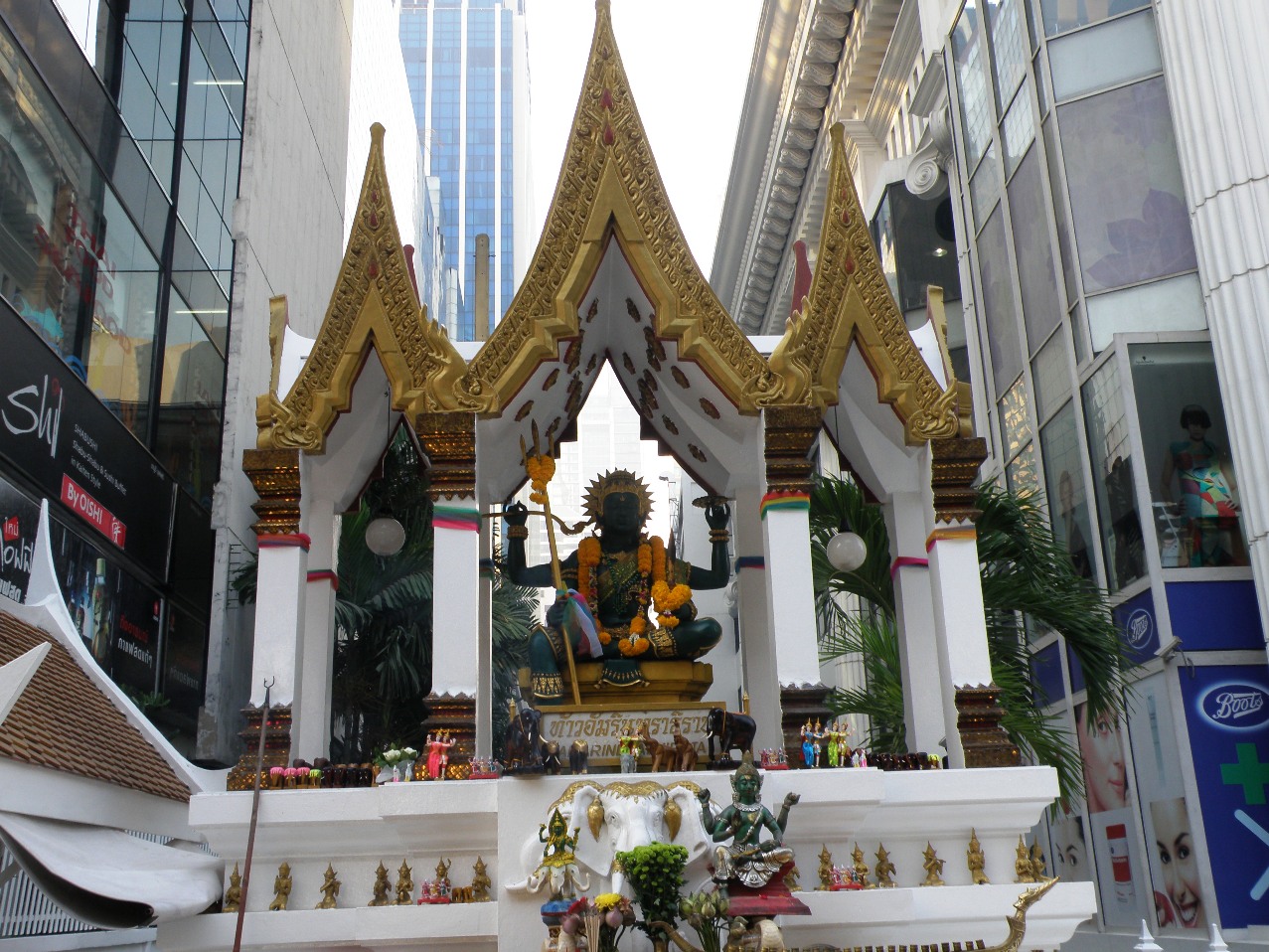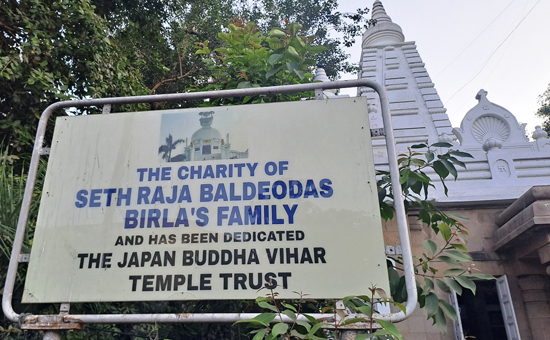At the outset note that what Dr B R Ambedkar said, 'Buddhism in its material form had disappeared. I agree. But as a spiritual force it still exists'. At the Parliament of Religions Swami Vivekananda said that Buddhism is the fulfillment of Hinduism. If Jainism continues to exist and prosper in India for centuries there has to be solid reasons why Buddhism vanished from India.
Here are nine reasons why Buddhism vanished from India. It ends with Dr S Radhakrishnan's words on the origin of the Four Noble Truths stated by Buddha.
One, Buddhists paid importance to the life of a monk and not householder thus the ordinary man was at a loss how to live life. Two, deterioration in the political and economic life. Monasteries were supported by the people and kings like Ashoka. When support dwindled it affected popularity of Buddhism.
Three, was admission of women into monasteries and the more or less indiscriminate conversion of men, women into monks and nuns. While true renunciation and celibacy were appreciated, people wanted to see them well practiced. If monks and nuns had lived by the rules that they were taught, people would have supported them inspite of any hardship that they faced.
Four, Buddhism existed in the monasteries and unlike the dharmaasutras (ethical codes) lacked a moral code. So when monasteries disappeared, Buddhism disappeared. Muslim invasions followed by destruction of the great monastery of Uddandapura (Bihar). The wholesale massacre of its monks might make us visualize how the great monasteries of Nalanda, Vikramasila and others met with a tragic end.
Five, "Buddhism absorbed various thoughts and beliefs from many different cultures, religions and philosophies. Thus a variety of spiritual practices and mythologies arose between the first century B.C. and the sixth century a.d. for e.g. some Buddhists adopted the tantric sadhanas and distorted them for the sake of enjoyment and comfort. This undigested knowledge of tantra - led these Buddhist followers to their complete downfall". 4 Note this distortion happened only in some places - in Tibet it is very pure. Since Tibet was not subject to Muslim invasions, the purity remained. Tibet has now become a source of knowledge for India.
Six, Pandit Rajmani Tugnait, Spiritual head of the Himalayan Institute wrote, "three schools Vajrayana, Siddhayana and Sahajayana developed between the 5-10th centuries in north-eastern India and then to Nepal, Sikkim and Tibet. The founders were great yogis but their teachings and practices were misused by unworthy followers. As a result anyone who had difficulty in earning a living became a monk. As a result society had the responsibility of supporting the ever increasing population of monks. And so things came to such a pass that Kumarila Bhatta and Sankara uprooted Buddhism from its motherland India". 4
Seven, Dr B R Ambedkar addressed delegates of Young Men’s Buddhist Association in May 1950 at Colombo on ‘Rise & fall of Buddhism in India’ and said, "Buddhism in its material form had disappeared. I agree. But as a spiritual force it still exists." On the decline and downfall of Buddhism he said: the adoption of some rituals and practices from Buddhism by the Vaishnava and Shaiva cults who were vociferous in their propaganda against Buddhism. During the invasion by Allauddin Khilji thousands of priests in Bihar were massacred and consequently some of them fled for their lives to Tibet, China and Nepal. In the meanwhile, the majority of Buddhists went over to Hinduism. Another cause was that Buddhism was difficult to practice while Hinduism was not. Lastly, the political atmosphere in India had been unfavourable to the advancement of Buddhism he concluded." 3 pg 422
Eight, at the Parliament of Religions Chicago Swami Vivekananda said, " I am not a Buddhist, as you have heard and yet I am. If China, or Japan, or Ceylon follow the teachings of the Great Master, India worships him as God incarnate on earth. You have just now heard that I am going to criticize Buddhism, but by that I wish you to understand only this. Far be it from me to criticize him whom I worship as God incarnate on earth. But our views about Buddha are that he was not understood properly by his disciples. The relation between Hinduism (by Hinduism, I mean the religion of the Vedas) and what is called Buddhism at the present day is nearly the same between Judaism & Christianity. Jesus Christ was a Jew, and Shakya Muni as a Hindu, The Jews rejected Jesus Christ, nay, crucified him, and the Hindus have accepted Shakya Muni as God and worship him. But the real difference that we Hindus want to show between modern Buddhism and what we should understand as teachings of Lord Buddha lies principally in this: Shakya Muni came to preach nothing new."
Read full text of Swami's speech Buddhism is a fulfilment of Hinduism
Nine, the extreme asceticism practiced and popularized by both Buddhism and Jainism disturbed the social life of India. Magadha, the seat of many imperial dynasties, became Bihar, the land of monasteries (viharas). There was nothing in these religions to emphasize the importance of life in this world and its values. These causes led to a bloodless revolt by the orthodox in the eight-century a.d.
The revolt was staged from two sides, the Brahmanic and the Upanisadic. Kumarila was the leader of the former and Sankara of the latter. Kumarila succeeded in reviving a strong positive attitude towards the world and its values and all that could be called human and activistic. On the other hand, Sankara said that everything that was good in Buddhism already existed in the Upanishads. In fact, Gaudapada, the grand teacher of Sankara, unified the current spanda (vibration) doctrine of Saivism, the vijnana (mind) doctrine of the Buddhists and the Atman doctrine of the Upanishads in his Mandukyakarikas. This paved the way for Sankara to assimilate and absorb Buddhism.
Note that inspite of the waning popularity of Buddhism in the 10-11th centuries the Brihadisvara Shiv Temple Thanjavur (completed in 1010 a.d.) has three depictions of Buddha. Probably it is because Buddha because an avatar of Vishnu by then. "However, is this Buddha the same as the Sakyamuni is a difficult question to comprehend. But the point to dwell on is the portrayal in both stone and paint - the size and the dignified manner in which he is portrayed. The reverence is very visible." External link There is a Buddha sculpture in Rani ki Vav, Patan, Gujarat where he is shown as one of the avatars of Lord Vishnu. Vav made around 11th century.
It is now made out to be as if Buddhism and Hinduism are separate religions. Without getting into too much of detail, scholar and former President of India Dr S Radhakrishnan wrote about what is common to Upanishadic and Buddhist thought in book Indian Philosophy. In same book he said that the four noble truths of Buddhism correspond to the four truths of Samkhya.
Dr Radhakrishnan said, "The 4 noble truths of Buddhism correspond to the 4 truths of Samkhya as put in the Samkhyapravacanabhasya: '1. That from which we deliver ourselves in pain. 2. Deliverance is the cessation of pain. 3. The cause of pain is the want to discrimination between prakrti and purusa, which produces the continuous union. 4. The means of deliverance is discerning knowledge'. Kapila rejects sacrifices, prayers and ceremonies as much as Buddha.
The Buddhists admit that Kapila, the sage to whom the Samkhya books ascribed the origin of their philosophy, lived several generations before Buddha, and that Samkhya ideas prevailed at the time of Buddha." 5
Pandit Rajmani Tugnait wrote, "Buddhism did not teach about existence of God or any permanent soul. Because it is human nature to lean on someone when one finds himself helpless, the concept of God or an all-loving Supreme Bring and almighty supporter was gradually developed among this devotees, with Buddha himself identified as an incarnation of transcendental Reality. This aspect of Buddha is called dharmakaya - the dharma body of Buddha." 4 pg 65
Thus, Buddha as dharmakaya is comparable to Brahman, the transcendent Reality as described in the Upanishads.
A lot is made of the Buddhist presence in S.E. Asia. Scholar Sanjay Rao wrote, "Buddhists went to countries where Hinduism had already entered as a school thought for eg Thailand, Cambodia, Indonesia etc. This allowed easy access and acceptability. They entered so smoothly and went beyond where Hindus could reach."
Today, in India Hinduism and Buddhism are treated as two separate religions whilst in countries like Thailand there is no such iron-clad distinction. For e.g. Thais worship Buddha and Lord Indra whilst in India Indra is considered a Vedic God. Please read Lord Indra in Buddhism
 Pic of Indra temple at Sukumwit street Bangkok
Pic of Indra temple at Sukumwit street Bangkok
Buddhism re-gained popularity when Dr Ambedkar became a Buddhist in 1956. However, his followers are called neo-Buddhists. Dalai Lama's presence in India and his international stature have contributed to Buddhism's global popularity.
Prof Padmanabh Jaini in his Collected Papers on Buddhist Studies has made an excellent study on the reasons for Survival of Jainism and Disappearance of Buddhism in India. Read page 140. Also note, that not withstanding Buddhism vanishing from India the Buddhist Caves at Ellora stood side by side alongside the Hindu and Jain ones for centuries. So also Ajanta Caves survived. In fact, around 1590 a Saivite Mahant Shri Giri arrived and took charge of the Mahavira. A Sivalinga at the Bodh Gaya Temple is worshipped to this day. To see Bodha Gaya album
References
1. Introduction to Comparative Philosophy by P T Raju.
2. History & Culture of Indian People by Bhartiya Vidya Bhavan.
3. Dr Ambedkar Life & Mission by Dhananjay Keer.
4. Seven Systems of Indian Philosophy by Pandit Rajmani Tugnait.
5. Indian Philosophy Volume 1 by Dr S. Radhakrishnan published by Oxford University Press.
Also read
1. Buddha and his Message
2. Hindu symbols in Thailand
3. Photographic exhibition Buddhist heritage in the world
 A Birla Family Member did charity for this Japanese Buddha Temple at Worli, Mumbai.
A Birla Family Member did charity for this Japanese Buddha Temple at Worli, Mumbai.